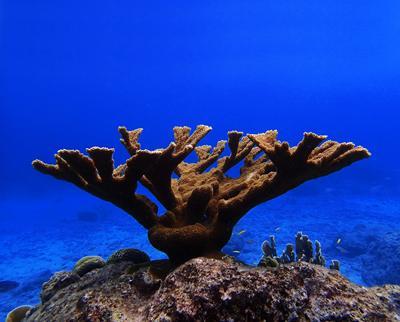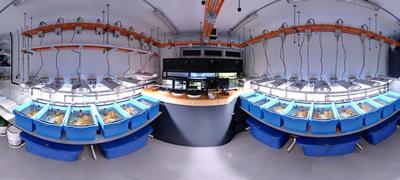€3.5 million awarded to predict the future for coral reefs

A new multidisciplinary project bringing ocean research, 3D imaging and geochemistry together will enable Southampton scientists to predict the fate of coral reefs. The world’s coral reefs are the rainforests of the ocean. But they are under huge threat from anthropogenic change, such as over fishing and climate change, which is causing ocean warming and acidification, higher sea levels and more ocean heatwaves and storms.
A €3.5 million project, funded by a prestigious Advanced Grant from the European Research Council’s Horizon 2020 programme, will use new methods to understand how corals make their skeletons and how this is influenced by environmental factors. Through this, the researchers will be able to understand coral reef resilience and, therefore, better predict the future for reefs.
Gavin Foster, Professor of Isotope Geochemistry from the School of Ocean and Earth Science, is leading the five-year project, called Microns2Reefs. He said: “Coral reefs support $30 billion-worth of ecosystem services, such as coastal protection, tourism and fishing, every year. They are often thought of as the canary in the coal mine – they provide an advanced warning of danger. Because they are at the bleeding edge of anthropogenic change there is a real urgency to better understand these organisms so we can mitigate the threats to these important ecosystems.”
Professor Foster intends to go beyond the state of the art by digging much deeper into the processes involved in making coral skeletons and how environmental interactions affect this.
He is proposing to use a novel combination of cutting edge analytical and imaging techniques to develop a new methodology called CalcIMAGE.
“The tools the coral uses to build its skeleton are imprinted on its composition and structure,” he explained. “We will be combining new geochemical methods with 3D imaging of the skeleton to try to fully understand what’s happening in the small micron-sized space where the skeleton is constructed. We’ll then expose model organisms in the Coral Reef Laboratory to various different environments, and apply genetic methods and CalcIMAGE to work out exactly how environmental change influences the toolkit the corals use to build their skeletons.”
He added: “This project takes my research in an exciting new direction, combining a number of world-leading leading facilities at the University, such as the Coral Reef Laboratory and the µ-Vis X-Ray Imaging, as well as the mass spectrometers in the Geochemistry Group. It’s vital that we do this cross disciplinary work to protect the future of the world’s coral reefs which are so crucial to our oceans and coastlines.”
Professor Foster will be recruiting four post-doctoral researchers and one PhD student, adverts will be placed in due course.
